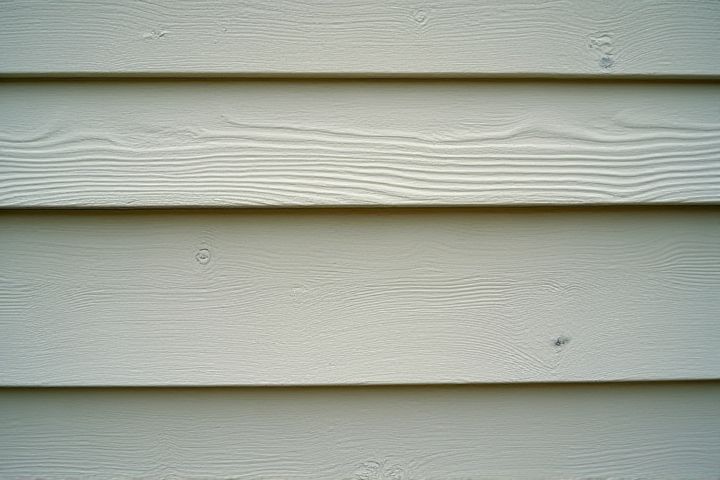
When selecting house siding, consider materials like vinyl, wood, fiber cement, and metal. Vinyl siding is a popular choice due to its durability, low maintenance, and variety of colors and styles. Wood siding offers natural beauty and insulation but requires regular maintenance to prevent rot and pests. Fiber cement siding combines the durability of cement with the aesthetic appeal of wood, resisting termites and fire. Metal siding, often made of aluminum or steel, provides a modern look and excellent longevity, making it ideal for contemporary homes.
What Materials To Use For House Siding
Vinyl
Vinyl siding, composed of polyvinyl chloride (PVC), is a popular choice for homeowners due to its durability, low maintenance, and affordability. With a lifespan of 20 to 40 years, vinyl maintains its color and resists fading, allowing you to enjoy a fresh look without frequent repainting. Available in a variety of styles and colors, including traditional lap, vertical panels, and shingles, vinyl siding offers versatility to match your aesthetic preferences. An insulation backing option can enhance energy efficiency, potentially lowering your heating and cooling costs by up to 20%.
Wood
Wood siding offers a variety of options, including cedar, pine, and redwood, each providing distinct aesthetic and functional benefits. Cedar is prized for its natural resistance to decay and insect damage, making it ideal for diverse climates. Pine, often treated for added durability, is a cost-effective choice that can be painted or stained in various colors. Redwood, while more expensive, boasts a rich color and longevity, enhancing the overall beauty and value of your home.
Fiber Cement
Fiber cement siding is a durable and low-maintenance option, composed of a blend of cement, sand, and cellulose fibers. This material typically comes in various styles, including wood grain, smooth, or paintable finishes, offering versatility in appearance. With a lifespan exceeding 50 years under proper installation, fiber cement is resistant to pests, rot, and fire, making it a preferred choice for homeowners seeking long-term value. Furthermore, many manufacturers provide warranties ranging from 30 to 50 years, ensuring peace of mind for your investment.
Metal (Aluminum/Steel)
Metal siding, such as aluminum and steel, offers durable and low-maintenance options for residential exteriors. Aluminum siding is lightweight and resistant to corrosion, making it suitable for coastal areas, while it can last 30 to 40 years with proper care. Steel siding, known for its strength and resistance to denting and weather damage, can last over 50 years, often coated with zinc or a protective finish to prevent rust. Both materials come in various finishes and colors, allowing you to customize your home's aesthetic while providing excellent insulation and energy efficiency.
Brick
Brick is a favored choice for house siding due to its durability, low maintenance, and timeless aesthetic appeal. This robust material is made from clay, which is fired at high temperatures to create sturdy bricks that resist fire, pests, and weather damage. Brick siding offers excellent insulation properties, helping regulate indoor temperatures and reduce energy costs. Furthermore, its variety of colors and textures allows homeowners to achieve a custom look that complements their architectural style.
Stone Veneer
Stone veneer is a popular choice for house siding due to its aesthetic appeal and durability. Comprised of natural stone or manufactured materials, it offers the look of solid stone while being lighter and easier to install. The veneer is often available in various styles, colors, and finishes to complement any architectural design. This material is also resistant to weather elements, requiring minimal maintenance, making it an excellent choice for both new homes and renovations.
Stucco
Stucco, a durable and weather-resistant material, consists of a blend of cement, sand, and lime, often mixed with water. This combination creates a hard exterior that not only enhances curb appeal but also provides excellent insulation, helping your home maintain a consistent temperature year-round. Available in various textures and colors, stucco allows for customization to suit your architectural style and personal preferences. When properly maintained, stucco siding can last up to 50 years, making it a cost-effective choice for homeowners.
Engineered Wood
Engineered wood siding combines the aesthetic appeal of traditional wood with enhanced durability and weather resistance. Typically made from wood strands, fibers, or veneers bonded together with adhesives, it provides a sustainable alternative, often utilizing recycled materials. With a range of styles and finishes, engineered wood can mimic the look of real wood while offering better insulation properties, which improves energy efficiency in homes. When properly maintained, engineered wood siding can last over 30 years, making it an economical choice for homeowners seeking a balance between beauty and longevity.
Composite
Composite siding, an innovative building material, combines wood fibers and plastic, resulting in a durable and low-maintenance exterior option for your home. This siding typically comes in various styles, including planks, panels, and shingles, and offers a wide range of colors and finishes to match your aesthetic preferences. With a lifespan of 25 to 30 years, composite siding is designed to resist pests, rot, and fading while providing excellent insulation properties. Homeowners can expect installation costs to range between $3 to $8 per square foot, making it a cost-effective choice for enhancing your home's exterior.
Concrete
Concrete siding offers durability and low maintenance, making it an ideal choice for homeowners. With a lifespan exceeding 50 years, this material resists rot, pests, and harsh weather conditions. Available in various styles, including board and batten, stucco, and textured finishes, concrete can mimic the appearance of wood or stone, enhancing your curb appeal. Consider using insulated concrete forms (ICFs) for added energy efficiency, reducing heating and cooling costs by up to 25%.
